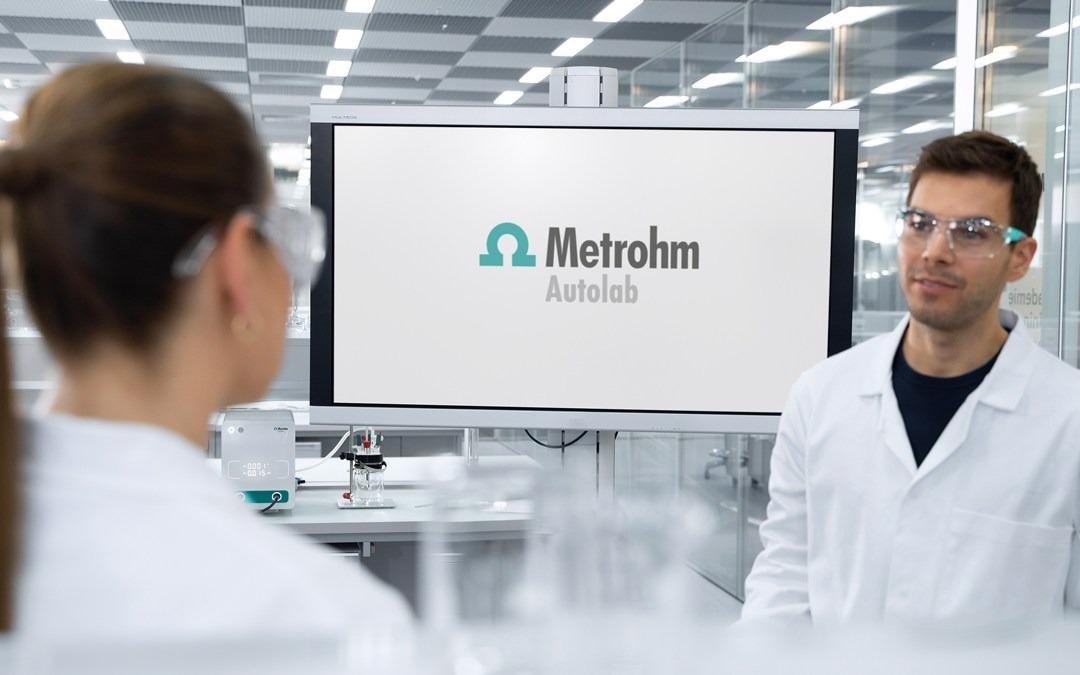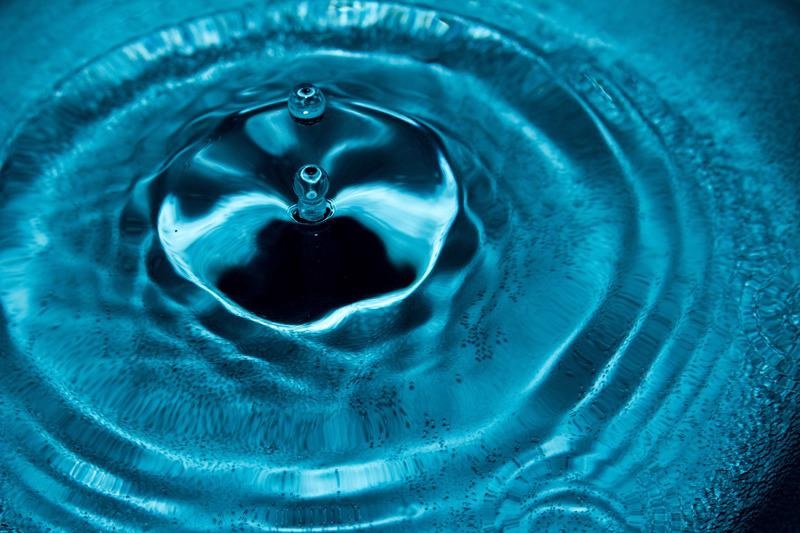Green hydrogen - generated from water electrolysis utilizing renewable energy sources - is being explored as a way to decarbonize chemical processes and reduce dependence on fossil fuels.

Image Credit: Metrohm Middle East FZC
This approach is extremely attractive from an environmental standpoint because there are no greenhouse gases produced when using hydrogen in a fuel cell and the mild conditions used during electrolysis.
It should be noted, however, that the economics of fuel cell systems for energy conversion and electrolysis rely heavily on the costs of electricity and metals like titanium, iridium, platinum and nickel. In order for green hydrogen to become an economically viable option, electrolyzer operating expenses must be minimized.
A large contribution to cost is the electricity input. This means it is necessary to decrease the cost of renewable energy. There is cause for optimism in this regard as demonstrated by solar panels becoming more affordable and efficient within the past decades, but there is more work that can be done for the increased success of green hydrogen.
For example, operational and capital costs could be reduced by the development of more durable and cheaper components, and more efficient electrolyzers could make better use of the input electricity.
Cross-Disciplinary Interest in Green Hydrogen
Figure one shows electrolyzers, which are primarily electrochemical devices with electrocatalysts responsible for water splitting (Figure 1). Researchers who are not traditionally trained in electrochemistry are being attracted to the scientific challenges related to optimizing electrolyzers.
Inorganic physicists and chemists are also interested in the search for efficient OER (Oxygen Evolution Reaction) and HER (Hydrogen Evolution Reaction) electrocatalysts. Expertise in polymer and organic chemistry is needed for the development of better membranes.
The know-how of a materials scientist is required for the optimization of catalyst inks and their interaction with substrates. Calculating mass flow and managing heat within the fuel cell stack and balance of plant are engineering activities.
The collaboration of engineers and scientists across many disciplines has been encouraged by the ongoing development of green hydrogen technologies. This has resulted in the development of exciting new materials and techniques as well as an influx of creativity and insight.

Figure 1. Diagram of the electrolysis of water (water splitting) with respective half reactions at the cathode and anode in alkaline and acidic media. Image Credit: Metrohm Middle East FZC
Back to Basics
There is a need for quickly getting up to speed with best practices and learning a new scientific vocabulary when working in an unfamiliar domain. Education on laboratory skills and electrochemical principles was not a key focus area until recent years for many institutions.
There have been inconsistencies in the reporting of important performance indicators in some cases due to the deficiency of fundamental electrochemical training.
A more rigorous approach has been called for by the electrochemical community. This has resulted in experts stepping up to provide practical guidance for quantifying and reporting in this domain.
It is necessary to have well-defined performance indicators and benchmarks when investigating electrocatalyst materials. A comprehensive benchmarking protocol for evaluating and reporting figures of merit for OER electrocatalysts was published in 2013.
The use of various reference electrodes (RE) is a common source of inconsistency and confusion in electrochemical measurements. The overpotential needed for a specified production rate (i.e., the current density for the HER or OER process, shown in Figure 1) is used to judge electrocatalytic activity.
A three-electrode setup is needed to measure the potential, and it is crucial to find the RE to situate this potential on a relative scale, which allows the comparison of measurements carried out in various conditions and by different groups.
Another commonly used RE that is extremely well-suited for OER and HER studies is the reversible hydrogen electrode (RHE). A recent article from ACS Catalysis explains how to prepare and work with an RHE and describes why the RHE is the ideal reference electrode for electrolysis research.
All standard redox potentials are reported versus the standard hydrogen electrode (SHE) by convention. The RHE refers to the reduction of a proton under non-standard conditions, as described by the Nernst equation, and is a pH-dependent extension of the SHE.
The HER and OER are studied across the pH scale as electrolyzers operate under both acidic and alkaline conditions, shown in Figure 1. The RHE shares the same dependency on pH as the HER and OER and is therefore suitable for use at any pH.
A Common Ground to Stand on
To quantify the energy efficiency of electrolysis cells and stacks, thermodynamic analysis is often applied.
Diverging definitions for the energy efficiency coefficient from academic and industrial literature is highlighted in a recent review article in the Journal of Power Sources. The article reminds readers that both electricity and heat must be accounted for in the analysis and provides derivations in various conditions.
Summary
Just a small fraction of the many resources available for building a common understanding and better collaboration among all researchers working on the improvement of green hydrogen technologies have been highlighted by the articles presented here.

Image Credit: Metrohm Middle East FZC
The research community carried on with enthusiasm when the COVID pandemic shut down laboratory work and travel for many people.
Scientists from around the world and disciplines have been brought together by online seminars and working groups held openly and without cost.
For example, in 2021, the Electrochemical Online Colloquium was started. Essential topics in electrochemistry are addressed in this ongoing series of lectures by providing educational content alongside the personal perspective of expert speakers.
The importance of transitioning to sustainable and climate-safe energy and chemical processes is acutely known by the electrochemical community. The use of green hydrogen for energy conversion and storage is a promising strategy that requires scientific advancement to thrive.
Thankfully, while the electrochemical community continues to drive collaborative efforts and share their core knowledge, researchers from many disciplines are bringing their skills and creativity to this topic.
References
- Green Hydrogen Cost Reduction: Scaling up Electrolysers to Meet the 1.5 °C Climate Goal; International Renewable Energy Agency: Abu Dhabi, 2020.
- McCrory, C. C. L.; Jung, S.; Peters, J. C.; et al. Benchmarking Heterogeneous Electrocatalysts for the Oxygen Evolution Reaction. J. Am. Chem. Soc. 2013, 135 (45), 16977–16987. doi:10.1021/ja407115p
- Niu, S.; Li, S.; Du, Y.; et al. How to Reliably Report the Overpotential of an Electrocatalyst. ACS Energy Lett. 2020, 5 (4), 1083–1087. doi:10.1021/acsenergylett.0c00321
- Jerkiewicz, G. Standard and Reversible Hydrogen Electrodes: Theory, Design, Operation, and Applications. ACS Catal. 2020, 10 (15), 8409–8417. doi:10.1021/acscatal.0c02046
- Nutting, J. E.; Gerken, J. B.; Stamoulis, A. G.; et al. “How Should I Think about Voltage? What Is Overpotential?”: Establishing an Organic Chemistry Intuition for Electrochemistry. J. Org. Chem. 2021. doi:10.1021/acs.joc.1c01520
- Lamy, C.; Millet, P. A Critical Review on the Definitions Used to Calculate the Energy Efficiency Coefficients of Water Electrolysis Cells Working under near Ambient Temperature Conditions. J. Power Sources 2020, 447, 227350. doi:10.1016/j.jpowsour.2019.227350

This information has been sourced, reviewed and adapted from materials provided by Metrohm Middle East FZC .
For more information on this source, please visit Metrohm Middle East FZC .